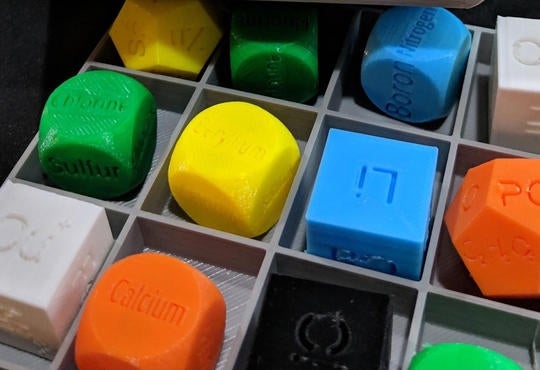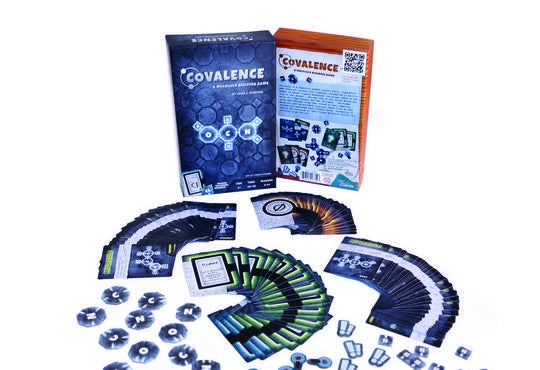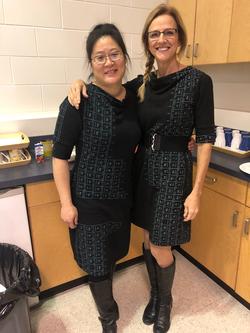 Introduction
Introduction
As educators over the past several years, we are aware that students are often challenged by certain concepts in the high school chemistry program. As a result, we have developed these multi-sensory and hands-on learning activities. The games are designed for students to work individually, in small groups, or within the entire class setting. The activities can be done at the beginning of class, to bridge major concepts, in the last ten minutes of class to check student understanding, or during tutorial time. Some students also take the activities home to review and prepare. This gives students the flexibility and choice to select activities that best support their learning preferences.
To give a broad overview and capture the gist of these games, we selected images of some favourite activities. If one or more of these activities interest you, all of the templates, rules, guidelines and files along with assessments are available to download for free on our playeducateinspire.pbworks.com wikispace.
The pbworks wikispace was started in 2012 to post the activites we were doing in our classes. Currently, over 1000 invited users are using this space throughout North America and New Zealand. Teachers are welcome to upload files to share on the site. This article showcases only a sampling of some of the shared activities created and uploaded by teachers who have become members of our wikispace.
We hope that you will enjoy using these activities as much as our students do!
Puzzles
Magnetic puzzles, paper triominoes, squares, and templates
- Periodic puzzles
- Acid naming & mole calculation triominoes
- Compound naming squares (Tracey Stock, Elk Island School District, AB)
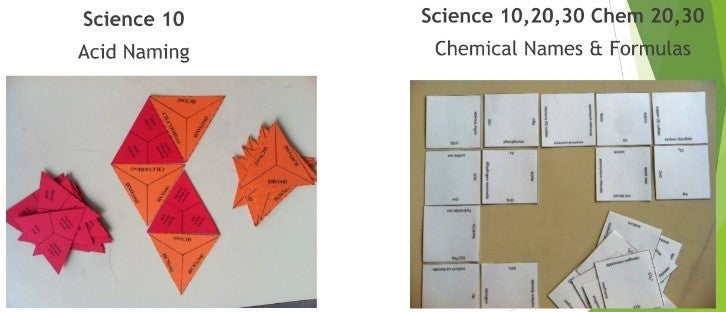 Puzzles including acid name rules, definintions with terms and examples (left), and chemical names and formulas (right).
Puzzles including acid name rules, definintions with terms and examples (left), and chemical names and formulas (right).
Concept dice
3D printed plastic dice, paper dice, wooden, acrylic dice, and templates (3D printing files also available at Wikispace).
- Anion/cation dice (solubility)
- Molecular compound dice
- Ionic compound dice
- Organic compound dice
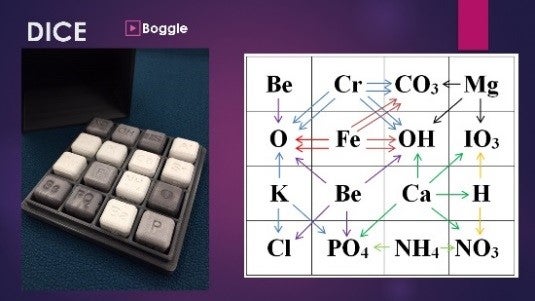 Naming and predicting compounds.
Naming and predicting compounds.
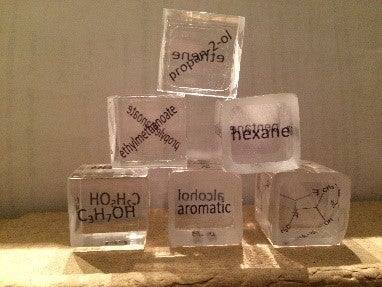 3D cubes for practicing organic nomenclature and classification.
3D cubes for practicing organic nomenclature and classification.
Card sorts
Magnetic with metal stand or whiteboard, paper cardstock and templates.
- Interpreting graphs, equilibrium, gas laws, uniform/non-uniform motion
- Compare/contrast concepts/terms, organic reactions and organic families, exo/endothermic reactions, electrochemical cells, oxidation/reduction, chemical reactions
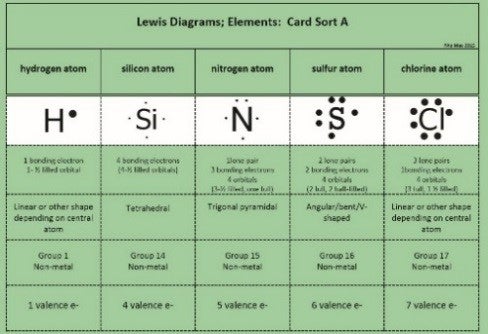 Compare and contrast molecular compounds: All pieces are cut out and students need to put them together. The title and first row of items remain intact and the pieces outlined with dotted lines are cut out into individual pieces to sort under the appropriate column (paper or magnetic versions).
Compare and contrast molecular compounds: All pieces are cut out and students need to put them together. The title and first row of items remain intact and the pieces outlined with dotted lines are cut out into individual pieces to sort under the appropriate column (paper or magnetic versions).
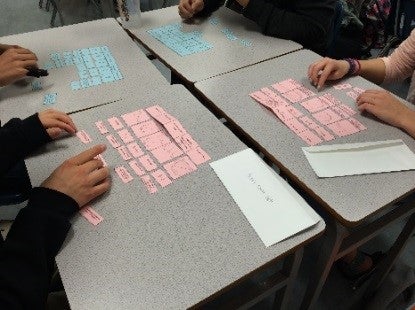 Paper card version of activity in progress, easily done on students’ desks.
Paper card version of activity in progress, easily done on students’ desks.
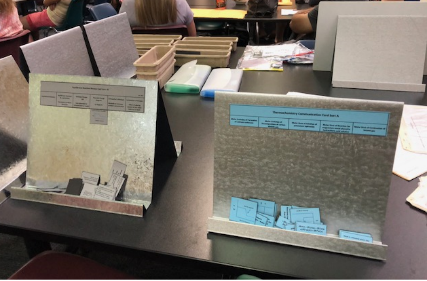 Magnetic verson of cardsorts on a double-sided metal stand to compare different concepts. These cardsorts can also be used on a whiteboard in the classroom.
Magnetic verson of cardsorts on a double-sided metal stand to compare different concepts. These cardsorts can also be used on a whiteboard in the classroom.
Concept cards
Paper, templates
- Scientific Inquiry method
- Chemical/Physical properties
- Redox and Acid/Base card games
-
Organic Ester Rummy, Organic cards
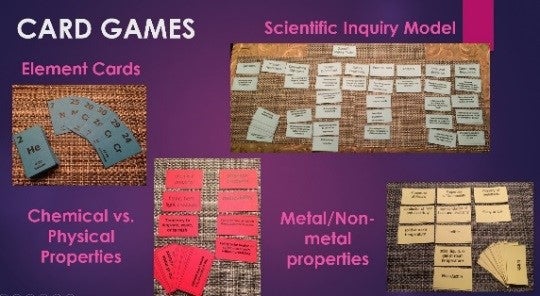 A variety of card games — different number of players and card games.
A variety of card games — different number of players and card games.
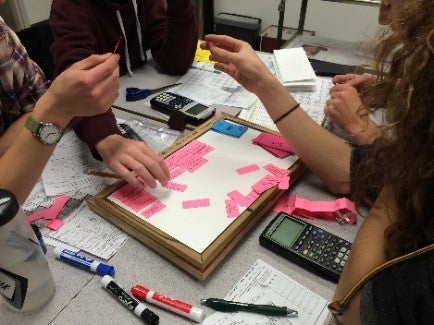 A chemistry card game in action.
A chemistry card game in action.
Plays, poems, memes, Venn diagrams, science yoga
- Voltaic cell play
- Modeling atoms/ions, beaker, styrofoam balls to represent protons, neutrons, electrons
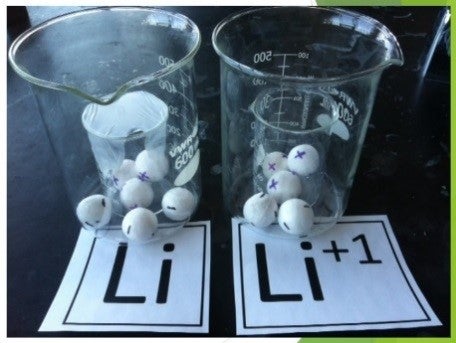 Manipulatives for modeling.
Manipulatives for modeling.
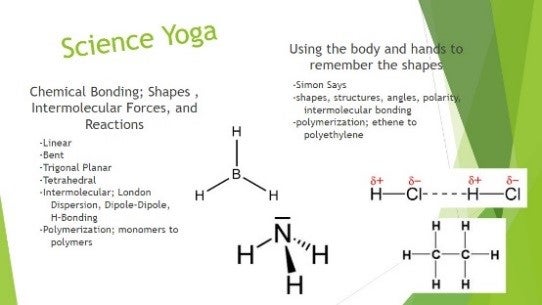 Science Yoga will get the students out of their seats.
Science Yoga will get the students out of their seats.
Overviews and relays
- pH titration curves; reaction, lab equipment
- Science waves, Criss-Cross Chemistry
- ICE table, graphs, and Kc calculations
-
Amphiprotic substances terms and definitions
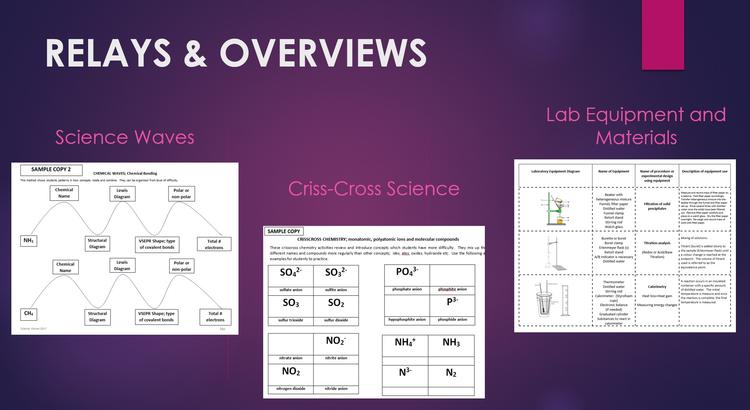 Visual games to engage students: These overviews and relays can be used to organize students in teams in class or outside as a physical education relay. White boards or laminated pages can be used to record student progress by team.
Visual games to engage students: These overviews and relays can be used to organize students in teams in class or outside as a physical education relay. White boards or laminated pages can be used to record student progress by team.
Science strips
Used to sequence procedures, hierarchy of substances, and matching
- Calorimetry procedure, Combustion of Fuel, Formation of MgO, Heat of Neutralization or Solution
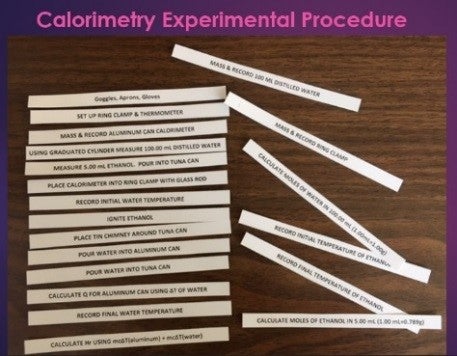 Students order procedures or rank properties, such as thermal stability, boiling point, ionization energy, electronegativity, size of ionic or atomic radii, electron affinity, etc.
Students order procedures or rank properties, such as thermal stability, boiling point, ionization energy, electronegativity, size of ionic or atomic radii, electron affinity, etc.
Unit review and course review mats
- Organized by unit/topic includes examples
- Used as a checklist or review of material covered in class
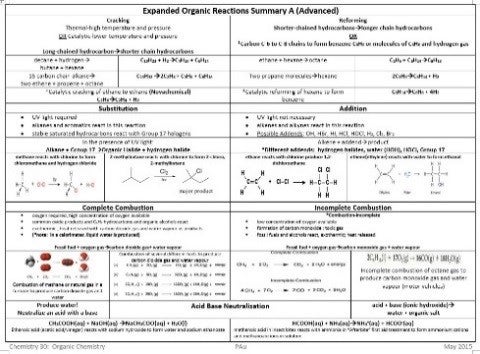 These placemats help students visualize an entire chemistry unit all in one place.
These placemats help students visualize an entire chemistry unit all in one place.



